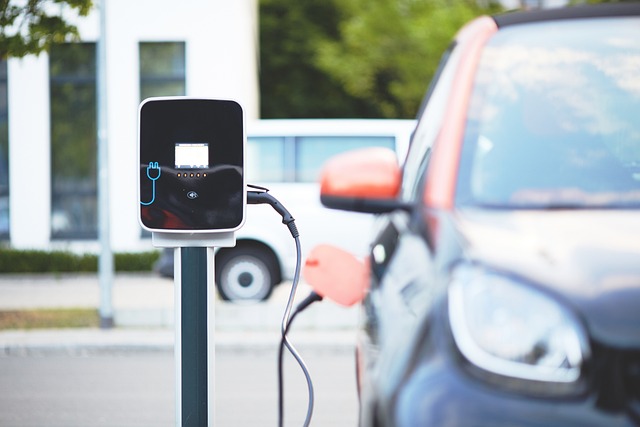Cost of ownership: batteries, parts, and service for enclosed commuters
Enclosed electric commuters offer weatherproof, compact transport for urban trips, but their ownership cost hinges on batteries, parts, servicing, and local rules. Understanding charging needs, maintenance cycles, and likely repair expenses helps prospective owners budget realistically for daily commuting and long-term sustainability.

Enclosed micro-mobility vehicles promise a sheltered, energy-efficient alternative to cars for short urban trips. They combine electric drivetrains with compact bodies to improve comfort and weatherproofing for commuters. Cost of ownership depends on multiple interacting factors: battery capacity and lifespan, availability and price of replacement parts, routine service intervals, and jurisdictional regulations that can affect insurance and road access. This article breaks down those elements to help you estimate total cost of ownership for enclosed commuters and compare representative models.
How do batteries and charging affect range?
Battery chemistry, usable capacity, and charging patterns have the largest single impact on operating cost and range. Lithium-ion packs used in most enclosed commuters provide reasonable energy density but degrade with calendar age and charge cycles. Fast charging can reduce downtime but may increase long-term degradation compared with slower charging. Range is affected by vehicle weight, aerodynamics, and accessory loads like heating or lights: an enclosed commuter using heating on cold days will see a larger range penalty than an open scooter.
Owners should track usable capacity (kilowatt-hours available) rather than nominal pack size. Replacing a degraded battery is often the single biggest repair expense, and many manufacturers offer battery warranties that cover a percentage of capacity over several years. Charging infrastructure and whether you can charge at home or rely on public chargers will also shape ownership costs and convenience.
What parts and maintenance are typical?
Unlike conventional cars, enclosed micro-mobility vehicles generally have fewer complex mechanical systems but still require regular upkeep. Typical maintenance items include tires, brakes (pads, discs or regenerative system checks), suspension components, cabin seals and hinges, and electrical connectors exposed to moisture. Weatherproofing elements such as door seals and window mechanisms can be a maintenance focus for enclosed designs.
Some enclosed commuters use motorcycle-derived components that are widely available and relatively inexpensive; others rely on bespoke parts that may be costlier or slower to source. Preventive maintenance—periodic inspections of high-voltage cables, corrosion checks, and software updates—can avoid expensive failures. Budgeting for consumables (tires, brake pads, fluids where applicable) on a yearly schedule will provide a more realistic total cost of ownership.
How much do service and repairs usually cost?
Service costs depend on whether the maker has an accessible service network and whether technicians are trained to work on high-voltage systems and enclosed cabins. Routine servicing for enclosed commuters can be cheaper than car maintenance but pricier than basic scooters. Expect periodic inspections, software diagnostics, and occasional component replacement.
Labor rates vary widely by region, and the availability of specialized technicians for electric drivetrains or unique vehicle designs affects turnaround time and cost. Independent shops may be able to handle many repairs at lower rates than factory service centers, but warranty conditions and high-voltage work should be considered. Owners should include both scheduled service intervals and a contingency fund for unexpected electrical or structural repairs when planning long-term expenses.
How do ergonomics, safety, and accessibility compare?
Enclosed commuters prioritize weather protection and improved ergonomics over the most compact open scooters. Cabin design affects driver comfort, ingress/egress for people with reduced mobility, and the placement of controls. Safety equipment—seat belts, roll structures, lighting, and visibility—varies by model and influences regulatory classification, which in turn impacts insurance costs and permitted road types.
Accessibility features like adjustable seating, low thresholds, and assistive controls add complexity and possible repair points but expand usability for a wider range of riders. When comparing models, consider how ergonomics influence daily wear and tear and whether safety components are standardized or unique to a maker, as the latter can raise replacement costs.
What about regulations, connectivity, and urban use?
Regulatory classification (light quadricycle, motorcycle, electric vehicle, or low-speed vehicle) determines licensing, insurance, parking rules, and where the vehicle may operate. Local regulations also influence retrofit requirements such as lighting, mirrors, or emissions compliance for hybrids. Connected features—telemetry, remote diagnostics, and OTA software updates—can reduce service visits but may create subscription costs.
Urban use patterns affect depreciation and maintenance frequency: frequent short trips in stop-and-go traffic may stress batteries more than steady suburban runs. Consider local parking availability, permitted lanes, and whether your city supports micromobility charging infrastructure when estimating operational convenience and potential additional costs for workplace charging or home upgrades.
Real-world cost comparison of enclosed commuters
A realistic ownership estimate should account for purchase price, expected battery replacement timeline, average yearly maintenance, and regional service rates. The table below lists several representative enclosed or micro-electric commuter models and a rough range for acquisition or market cost. These figures are illustrative; availability and price vary by country and model year.
| Product/Service | Provider | Cost Estimation |
|---|---|---|
| Twizy (small electric quadricycle) | Renault | €6,000–€12,000 |
| Ami (urban electric vehicle) | Citroën | €6,000–€8,000 |
| Microlino (micro electric cabin) | Micro Mobility Systems | €12,000–€18,000 |
| BMW C1 (used cabin scooter) | BMW / used market | €2,000–€6,000 |
| FUV (three-wheeled electric) | Arcimoto | $12,000–$18,000 |
Prices, rates, or cost estimates mentioned in this article are based on the latest available information but may change over time. Independent research is advised before making financial decisions.
Conclusion
Estimating the total cost of ownership for enclosed commuters requires balancing battery replacement likelihood, parts availability, service network strength, and local regulation effects. While these vehicles can reduce fuel and parking costs and increase year-round comfort, buyers should budget for battery degradation, periodic maintenance, and potential component scarcity for niche models. A clear comparison of purchase price, expected maintenance, and insurance under local rules will give the most reliable projection of lifetime ownership costs.






